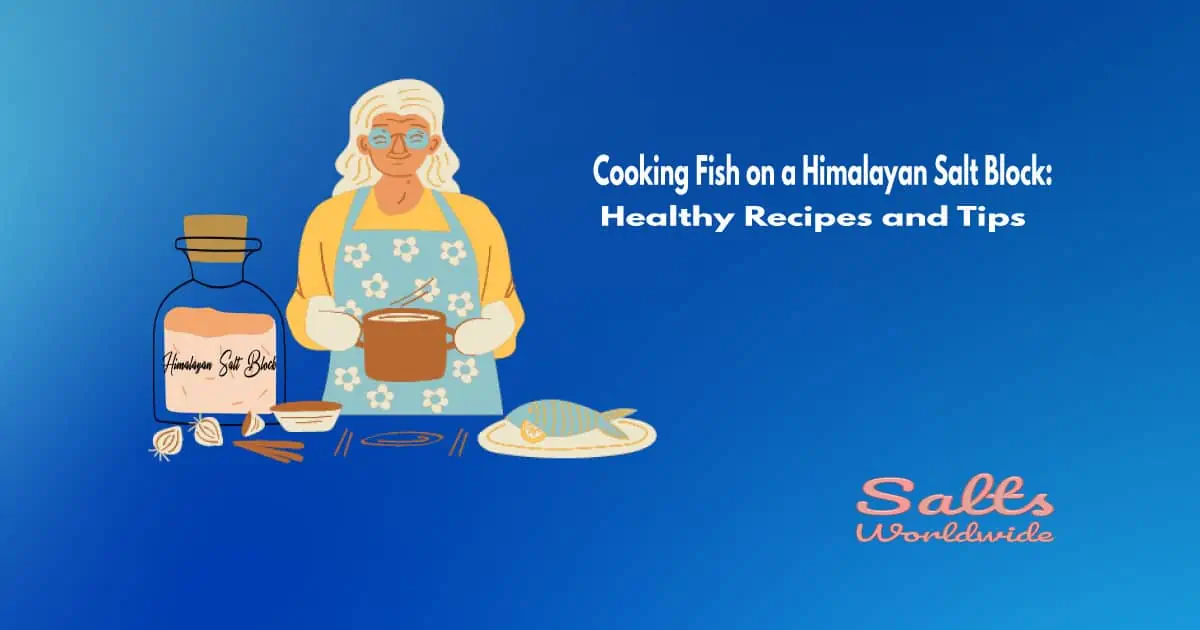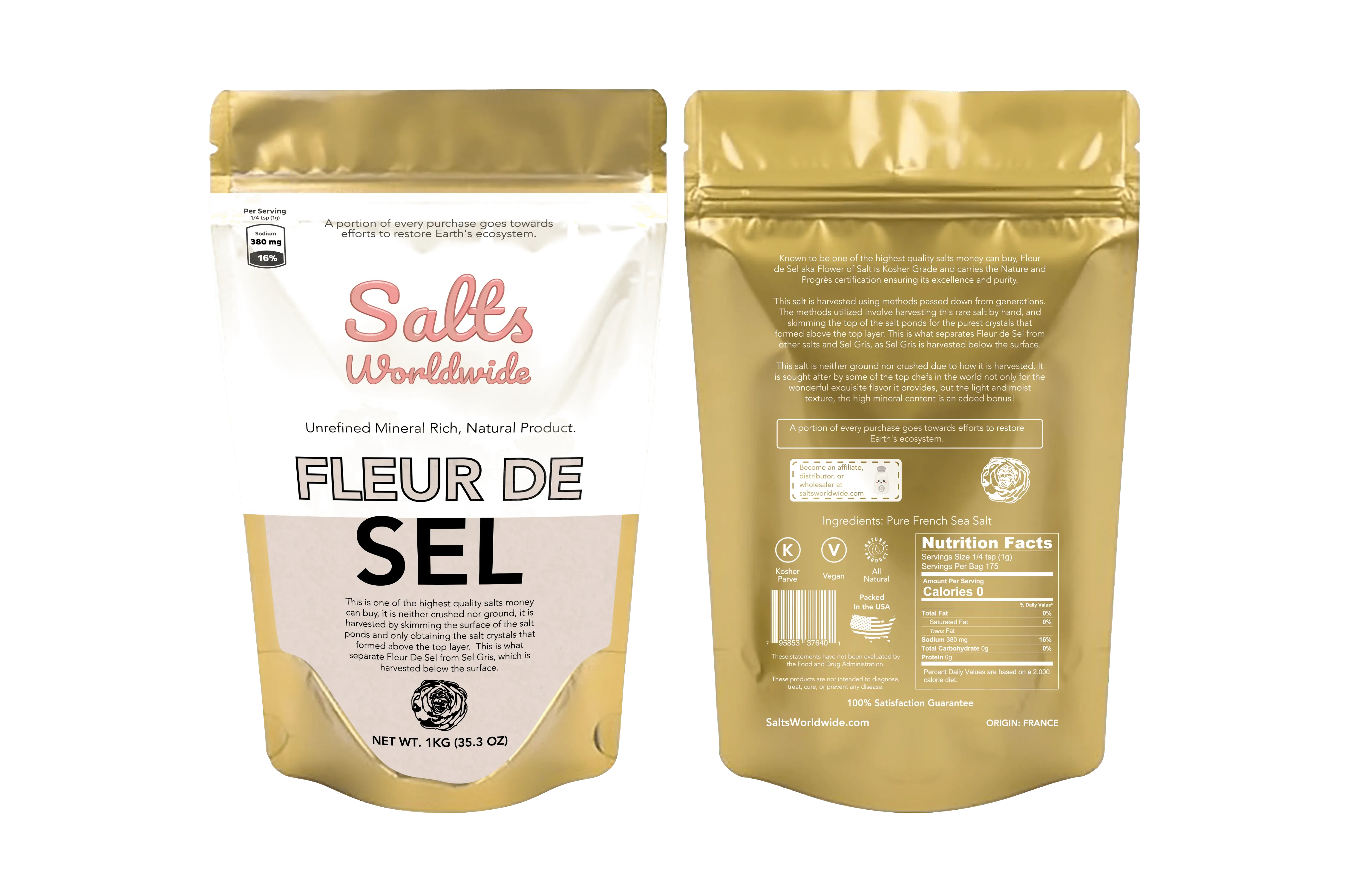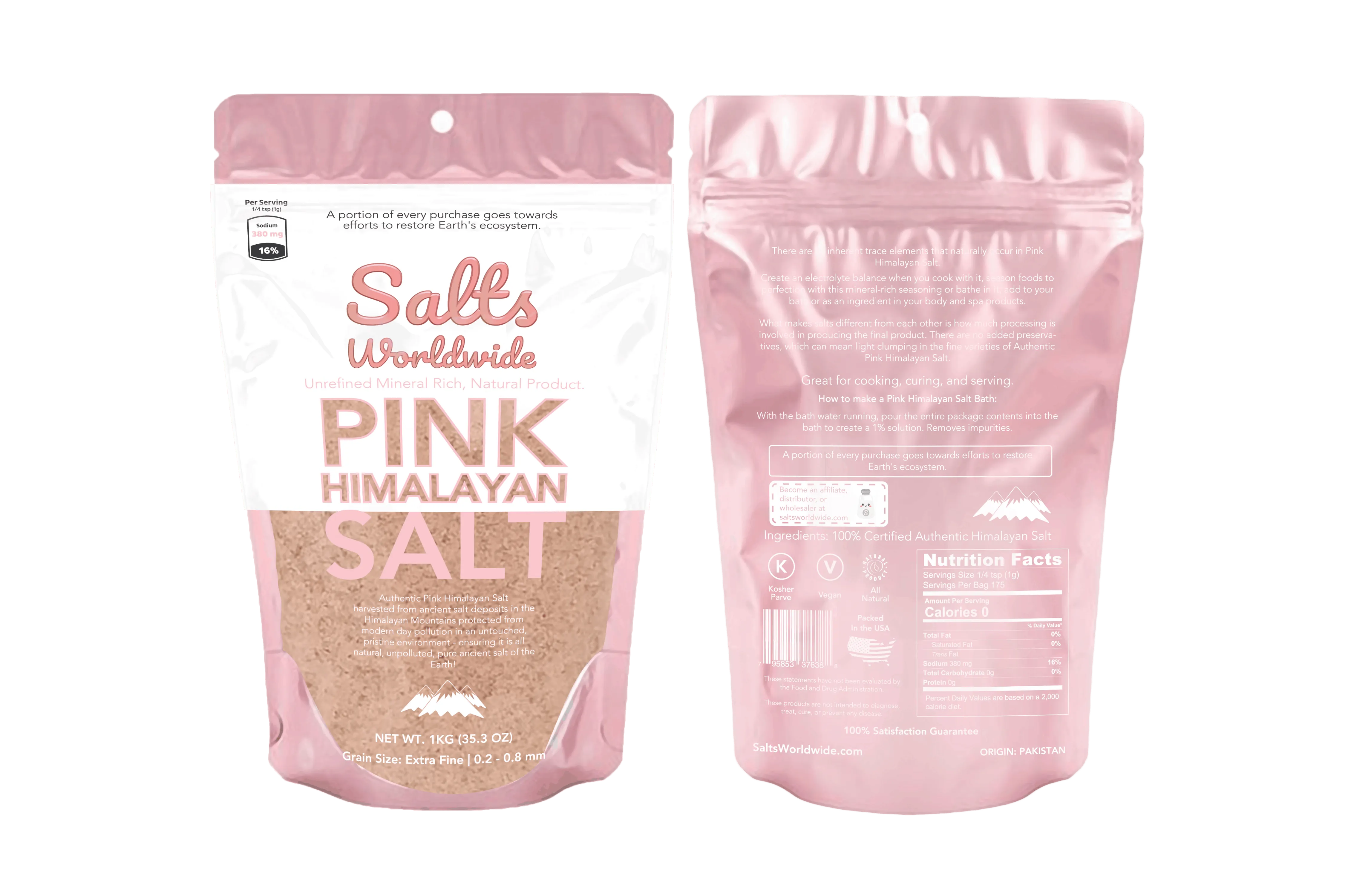If you are looking for a healthy cooking method that will add flavor and nutrients to your food, cooking fish on a Himalayan salt block is the perfect option! Himalayan salt blocks are made of pure, unrefined salt that comes from the Khewra Salt Mine in Pakistan. This ancient salt deposit is more than 250 million years old, and it is one of the purest salts in the world. When used for cooking, Himalayan salt blocks impart a delicious flavor to food and also provide many health benefits. In this blog post, we will give you some recipes for cooking fish on a Himalayan salt block, as well as some tips on how to do it correctly.
Table of Contents
How to cook fish on a Himalayan salt block?

Salt blocks cooking can seem intimidating at first, but cooking fish on a Himalayan salt block is actually easier than cooking on a grill. The best part about cooking fish or any food for that matter on a Himalayan salt block is the clean taste and added health benefits of cooking with Himalayan pink salt which has 84 trace minerals in it that are beneficial to our health.
To cook the fish, start by heating your salt block on the grill or in the oven at a temperature of around 400 degrees Fahrenheit for about 20 minutes. If you are cooking a thicker piece of fish, it will take longer to cook through so you may want to increase the cooking time to 30 minutes or more. You can also cook fish on a Himalayan salt block using the indirect cooking method.
How do you keep fish from sticking to salt blocks?
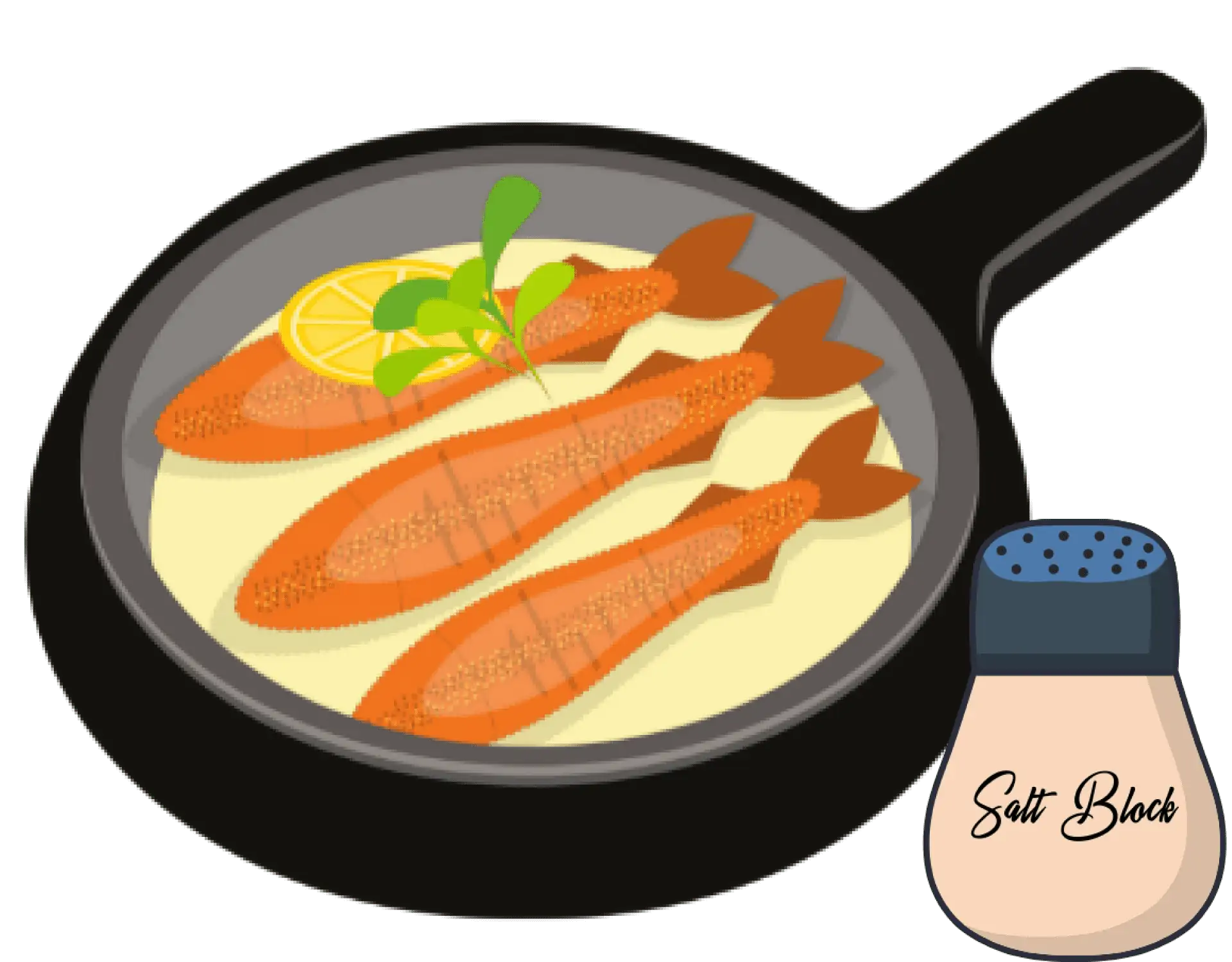
Cooking fish on a salt block can be super easy. The cooking time can take less than 15 minutes, depending on the type of fish you are cooking. It is important to cook your fish at a temperature of under 350 degrees Fahrenheit or 177 degrees Celsius as this will prevent burning and allow for even cooking.
Foods that stick easily to salt blocks include eggs, fruits, vegetables, and fish. You can use cooking spray or butter to prevent food from sticking, but you may also want to give your cooking surface a quick rinse before cooking on it again.
Some people even recommend covering the salt block with aluminum foil before cooking so that there are no worries about cleaning up afterward!
– cooking at a temperature of under 350 degrees Fahrenheit or 177 degrees Celsius will prevent burning and allow for even cooking
– using cooking spray or butter can help to prevent food from sticking
– giving your cooking surface a quick rinse before cooking on it again may also help
– covering the salt block with aluminum foil before cooking will prevent any worries about cleaning up afterward
How do you use a salt block for salmon?
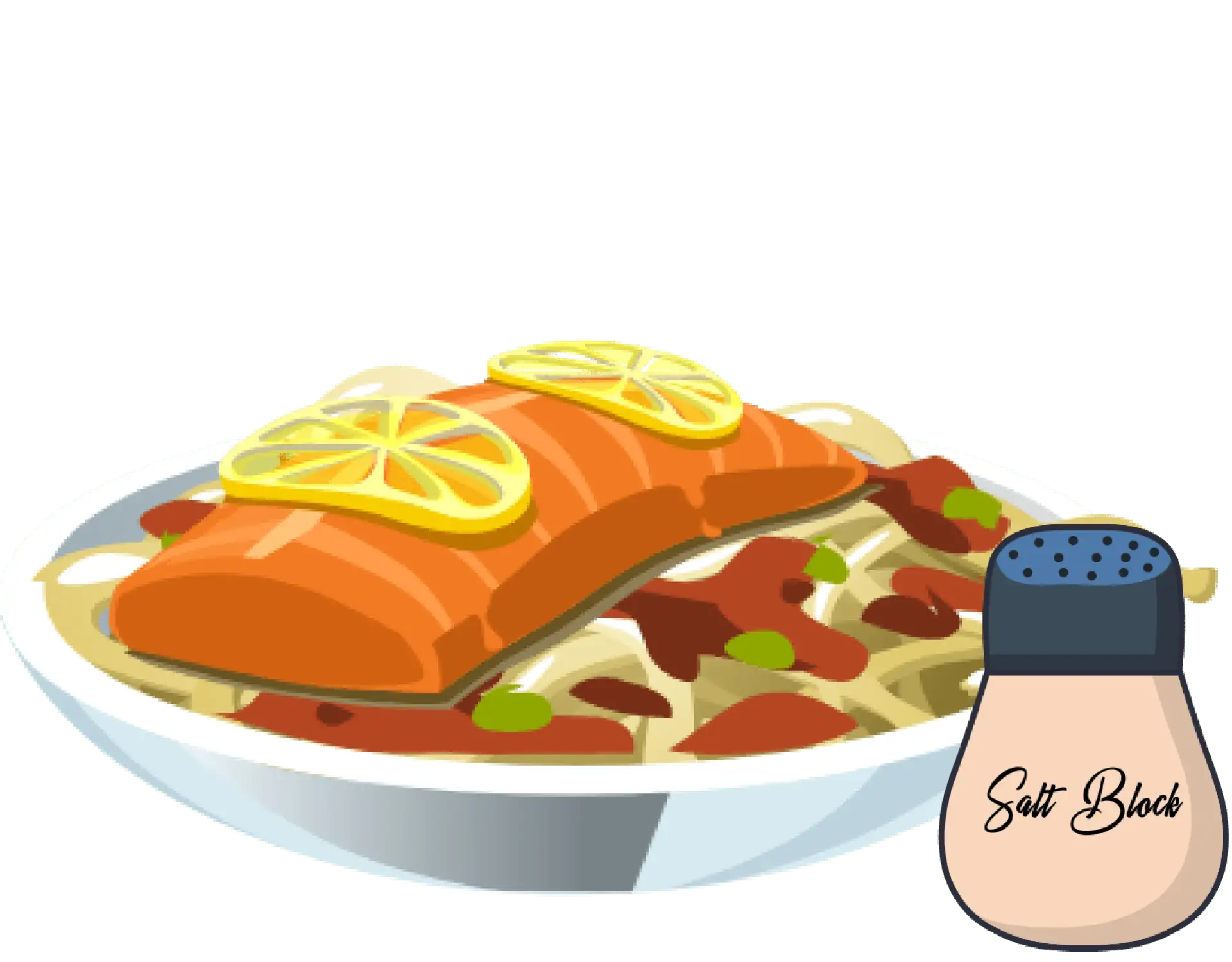
Salmon is a fatty fish that is high in omega-three fatty acids, which are beneficial for your health. cooking salmon on a salt block imparts a subtle smoky flavor and helps to keep the fish moist.
To cook salmon on a salt block, start by heating the block on the stove over medium heat until it is hot. Place the salmon skin-side down on the block and cook for about four minutes, or until the salmon is cooked through.
You can also use a salt block to prepare other types of fish, such as trout or cod. Simply follow the same cooking instructions listed above.
How long do you cook fish on a salt block?

The cooking time depends on the cooking method you use. The cooking time also depends on how thick your fish is and what temperature it should reach, which varies based on the cooking method.
When cooking a whole fish, cooking times may range from 15 to 20 minutes at 400 degrees Fahrenheit or 204 degrees Celsius. Grilling fillets will take approximately five minutes per side, or until the desired doneness is reached.
Thicker pieces of fish will need to cook for a longer period of time, and at a lower cooking temperature. For example, if you are cooking a one-inch thick piece of fish, you would want to cook it at around 250 degrees Fahrenheit or 121 degrees Celsius.
You can also use the cooking time as a guideline to determine when your salt block is ready for cooking. The block will be fully heated when the cooking time is up.
How do you clean a Himalayan salt block after cooking?
Once you’re done cooking, immediately remove the cooking surface from the heat. Gently rinse it with warm water and a soft sponge or cloth to clean cooking residue; do not use soap, detergent, abrasive scouring pads, or steel wool as these will scratch and damage the cooking surface. Dry thoroughly with a towel.
If you have cooked fish on your salt block you can use a cooking brush to gently scrub away any residue.
Salt cooking surfaces are delicate and will crumble if dropped or knocked, so handle with care. It’s best not to overheat the cooking surface as this may cause it to crack. And do not store your salt cooking surfaces in the refrigerator or freezer; they are not designed for freezing temperatures.
Do not wash cooking surfaces in the dishwasher or soak them in water for extended periods of time as this may cause moisture damage to the cooking surface.
You should also avoid cooking acidic foods, such as citrus fruits and tomatoes, on cooking surfaces for extended periods of time as this will cause the cooking surface to corrode and deteriorate.
The cooking residue may be cleaned off a cooking surface in two ways: either by scraping it away or scrubbing it off with a wire brush.
Scraping cooking residue off a cooking surface is best done with a metal spatula or spoon, not an abrasive one like steel wool. To scrape cooking residue away from the cooking surface you should use two hands: one to hold the cooking surface steady at its sides and another to guide your scraping tool along the cooking surface in order to prevent it from slipping out of your hand and scratching the cooking surface.
To scrub the cooking residue away from the cooking surface you should use two hands: one to hold the cooking surface steady at its sides, while another hand guides your tool along the cooking surface in order to prevent it from slipping out of your hand and scratching the cooking surface.
Once you have cleaned cooking surfaces with warm water, dry them thoroughly with a towel before storing or cooking on them again. If possible, set cooking surfaces in front of an open window so they can air dry before cooking again.
Once cooking surfaces are completely dry, they can be stored in any cool, dark place that is not too humid or moist. Some cooking surfaces may also benefit from being wrapped loosely in paper towels and then placed inside a plastic baggie with an airtight seal before they are stored in order to reduce the cooking surface’s exposure to air and moisture.
Does cooking on a salt block make the flavor of the fish salty?
Cooking fish on a salt block will not make the flavor of the fish salty. The salt block will impart a subtle smoky flavor to the fish. The subtly smoky flavor of cooking on a salt block is due to the natural elements in Himalayan pink salt.
Does the fish taste better when cooked with a Himalayan salt block than table salt?
When fish is cooked on a Himalayan salt block, the salt from the block penetrates the fish, giving it a delicious salty flavor. In contrast, when fish is cooked with table salt, only a small amount of salt is absorbed by the fish, resulting in a bland taste.
However, cooking fish on a Himalayan salt block is not recommended for people with high blood pressure, as the added salt might cause their condition to worsen.
The cooking surface of a Himalayan salt block is raised by about 0.25 inches from the ground, which makes it easier to cook fish than on cooking pans or grills where the cooking surface is horizontal.
Healthy Fish on a Salt Block Recipes
Here are a couple of our favorite recipes for cooking fish on a Himalayan salt block. Both recipes are light, healthy, and delicious!
Grilled Salmon with Honey-Lime Dressing
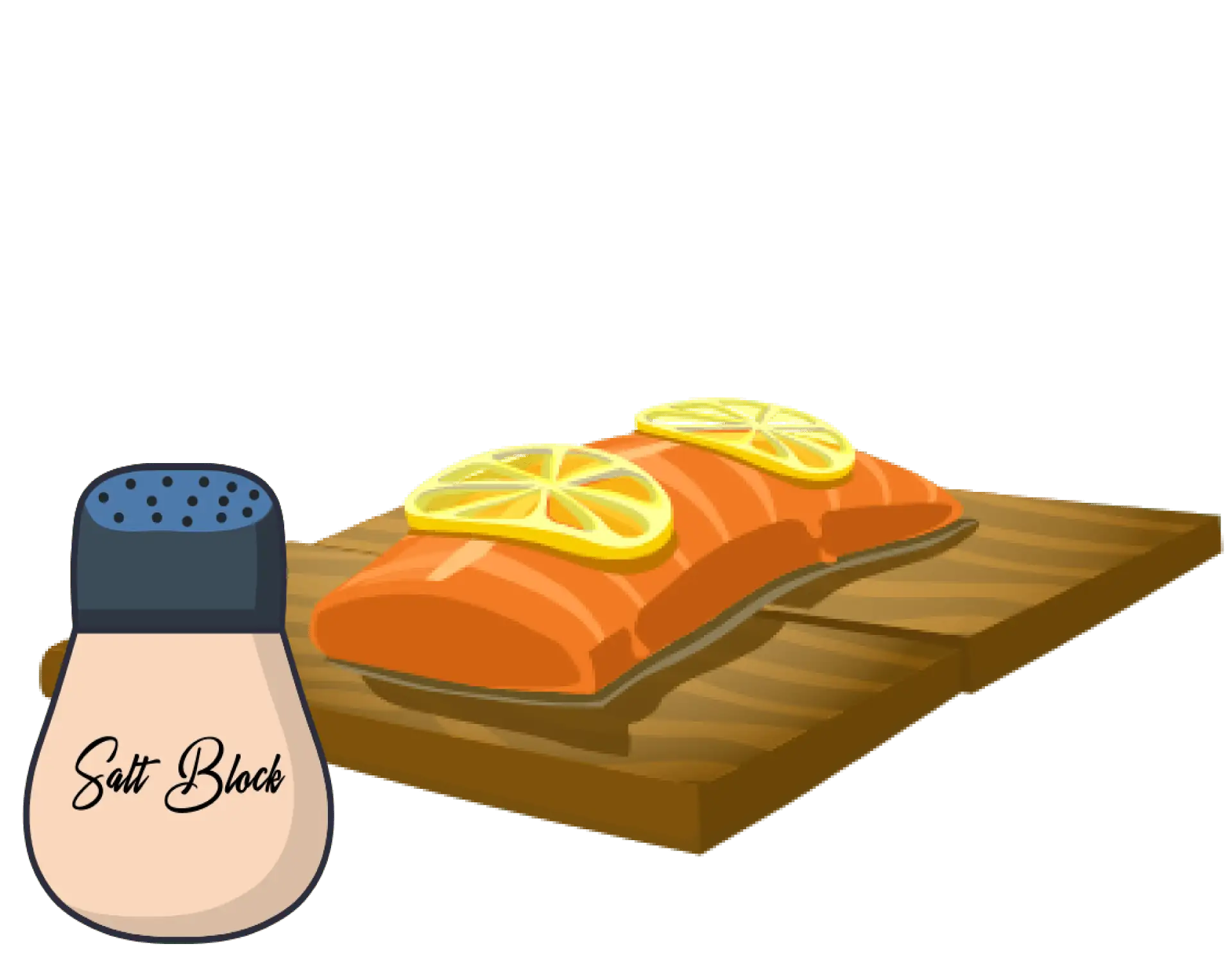
This dish is best with a salmon filet.
Ingredients:
– Salt block cooking surface (for grilling)
– Salmon filets, thinly sliced (about one per person)
– Olive oil, rub on the fish before cooking, and drizzle over cooked fish after cooking. (You can also use butter.)
– Honey mustard dressing (optional)
Directions:
– Preheat the salt cooking block to 450 degrees in the oven or on an outdoor grill. You can also use a cooking torch, but be careful not to burn yourself! The cooking surface should be at least 425 degrees when you put the fish on it.
– Rub the salmon slices with olive oil and place them on the cooking surface.
– Grill for about two minutes per side, or until cooked through.
– Remove from heat and drizzle with honey mustard dressing, if desired. Serve immediately.
Honey Walnut Tilapia
Ingredients:
– Salt block cooking surface (for cooking)
– Tilapia filets, thinly sliced (about one per person)
– Olive oil (or butter), to rub on the cooking surface and drizzle over cooked fish after cooking.
– Walnuts, chopped into tiny pieces.
– Honey mustard dressing (optional)
Directions:
– Preheat the cooking surface to 450 degrees in the oven or on an outdoor grill. You can also use a cooking torch, but be careful not to burn yourself! The cooking surface should be at least 425 degrees when you put the fish on it.
– Rub olive oil (or butter) onto your cooking surface. Sprinkle walnuts over the cooking surface, then place the filets on top of the cooking surface.
– Grill for about two minutes per side, or until cooked through.
– Remove from heat and drizzle with honey mustard dressing, if desired. Serve immediately.
Halibut Steaks on the Salt Block
Halibut steaks are cooking quickly and easily on a Himalayan cooking salt block.
Ingredients:
– Salt cooking surface (for grilling)
– Halibut fillets, thinly sliced (about one per person) – Olive oil to rub on cooking surface and drizzle over cooked fish after cooking.
– Salt block cooking spray (optional)
Directions:
– Preheat the cooking surface to 450 degrees in the oven or on an outdoor grill. You can also use a cooking torch, but be careful not to burn yourself! The cooking surface should be at least 425 degrees when you put the fish on it.
– Rub the cooking surface with olive oil or cooking spray, then place halibut filets on the cooking surface.
– Grill for about two minutes per side, or until cooked through.
– Remove from heat and drizzle with honey mustard dressing, if desired. Serve immediately.
Himalayan Salt Block Salmon Recipe
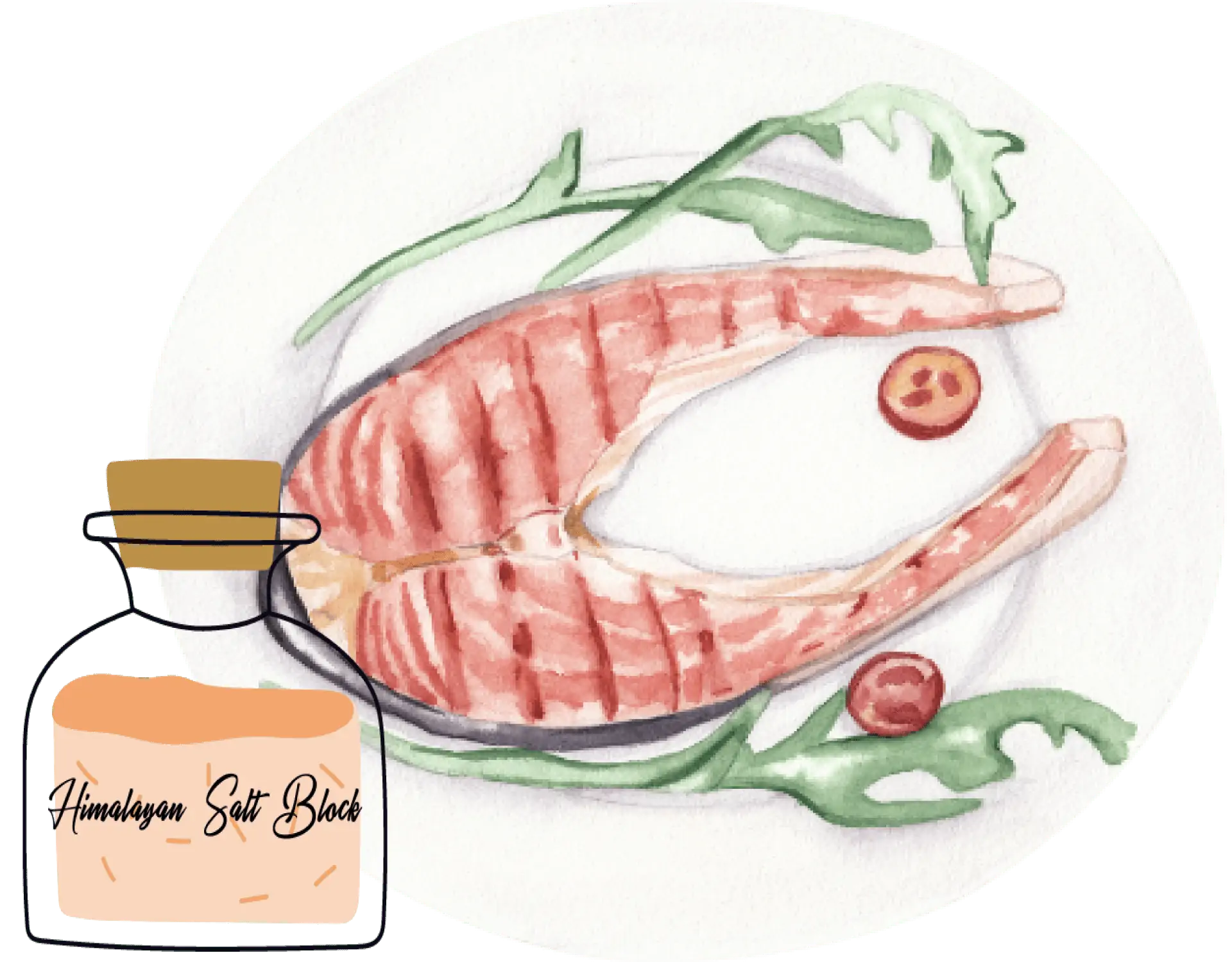
Ingredients:
– one salmon fillet
– cooking oil
– salt and pepper to taste
Instructions:
Preheat your oven to 350 degrees F. Grease a baking sheet with cooking oil, then season the salmon fillet with salt and pepper. Place the Himalayan salt block in the oven for about 15 minutes or until it is hot. Place the salmon fillet on the salt block and cook for about five minutes or until it is cooked through.
Final Thoughts
Fish cooking on a Himalayan salt block is a healthy cooking option that you can consider. The recipes included in this blog post are all healthy and delicious options for cooking fish on your salt block. Additionally, the tips offered in this blog post will help ensure that your fish cooking experience on a Himalayan salt block is a success. With these helpful tips and recipes, cooking fish on your salt block will be fun and delicious!
If you have not tried cooking on a Himalayan salt block, then be sure to give it a try!
Fleur De Sel
A rare and expensive form of sea salt that is harvested in parts of France. Known to be one of the highest quality salts money can buy.

